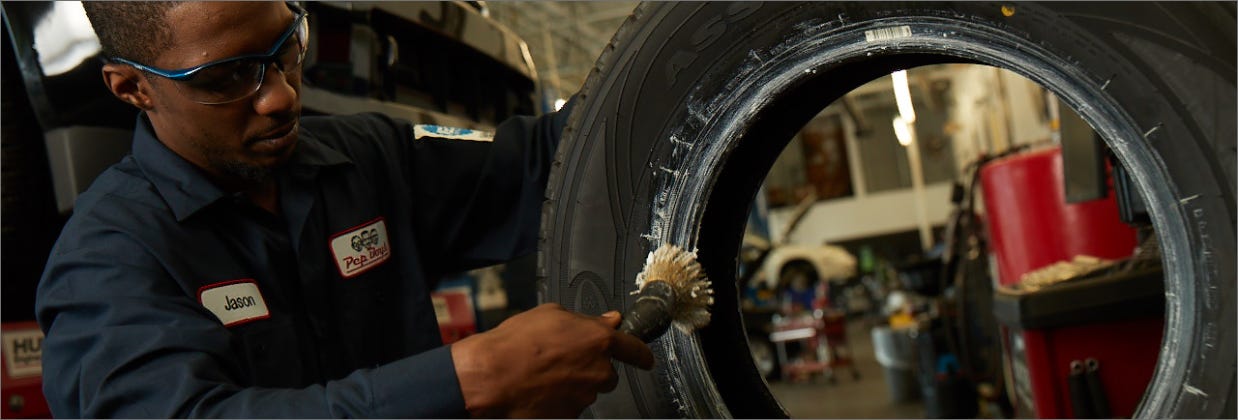Morris Tire: Exceptional Tire Solutions for All Automobiles
Morris Tire: Exceptional Tire Solutions for All Automobiles
Blog Article
Tire Repair Work Myths Debunked: Dividing Truth From Fiction
In the world of vehicle maintenance, tire fixing holds a significant location, yet it is usually shrouded in myths and mistaken beliefs that can cause confusion for vehicle proprietors. Understanding the distinction between fact and fiction when it involves tire fixing is critical for guaranteeing both safety and cost-effectiveness. From the misconceptions surrounding patching versus connecting a punctured tire to the performance of various tire sealants, there are several key locations where clarity is required to make informed decisions. Let's clarify some usual tire repair misconceptions and different them from the truth to equip you with the expertise needed to browse this important aspect of automobile maintenance.
Common Tire Repair Work Misconceptions
Eliminating widespread misunderstandings surrounding tire fixing is critical for preserving roadway safety and expanding the longevity of your lorry's tires. One common misconception is the idea that a pierced tire is irreparable and should be replaced totally. In fact, numerous punctures can be efficiently repaired by a professional, adhering to industry criteria. It is necessary to understand that not all leaks are produced equivalent; while some may without a doubt require a tire replacement, the majority can be safely repaired.
One more misconception is the idea that a DIY tire repair package is a sufficient service for all tire problems. While these packages can be useful for short-term solutions in emergencies, they are not a long-term service and may not attend to the underlying problem (tire shop near me). Looking for the expertise of a qualified tire service technician is constantly advised to make sure the safety and honesty of the tire

Can You Fix a Punctured Tire?
Fixing a pierced tire is a common technique in the automotive industry, often executed by specialist specialists following certain guidelines and requirements. Not all punctures can be repaired. The place, size, and seriousness of the leak are important consider identifying if a tire is repairable. Punctures situated on the walk location of the tire are generally repairable as lengthy see as they index are within a certain dimension limitation and do not affect the tire's architectural honesty.
It is very important to note that pierces near the sidewall or shoulder of the tire are generally not repairable as a result of security worries. Such locations go through considerable tension and flexing, making repairs undependable and possibly unsafe. Additionally, if the puncture is also big, surpassing the advised repairable size, or if the tire reveals signs of interior damages, it is more secure to change the tire entirely.
The Fact Regarding Patching Vs. Connecting
When thinking about the fixing of a punctured tire, recognizing the differences between patching and plugging is important for making notified choices relating to tire upkeep and security. Patching involves repairing the tire from the within, where a patch is used to cover the slit.
Myth: All Tire Sealants Work

When choosing a tire sealer, take into consideration factors such as the size of slits it can efficiently repair, compatibility with tire pressure monitoring systems (TPMS), and whether it is secure for the tire material. Remember, while tire sealants can be useful in emergencies, they are not an alternative for appropriate tire care and upkeep.
Ideal Practices for Handling Flat Tires
Due to the differing efficiency of tire sealers, understanding finest practices for handling punctures is vital for preserving roadway security and automobile efficiency. When experiencing a blowout, the initial step is to securely pull over sideways of the roadway, away from approaching traffic. Activate danger lights to alert various other drivers of your circumstance. It is advised to apply the auto parking brake and area wheel wedges under the tires to prevent the car from rolling. Next off, consult your automobile's manual to find navigate here the extra tire, jack, and lug wrench. Before attempting to transform the tire, guarantee that the area is level and steady. Loosen up the lug nuts, raise the vehicle with the jack, get rid of the lug nuts and puncture, and replace it with the spare tire. Tighten the lug nuts in a celebrity pattern, reduced the vehicle, and securely tighten the lug nuts. Ultimately, store away the blowout, devices, and devices, and bear in mind to examine the spare tire's stress periodically. Following these best techniques can assist you manage blowouts efficiently and securely.
Verdict
To conclude, it is necessary to different truth from fiction when it concerns tire repair work misconceptions. Recognizing the reality about covering vs. connecting, the effectiveness of tire sealants, and best methods for dealing with punctures can help ensure the security and long life of your tires. By debunking common misunderstandings and adhering to correct fixing guidelines, you can make educated decisions when it pertains to maintaining the health and wellness of your vehicle's tires.
Report this page